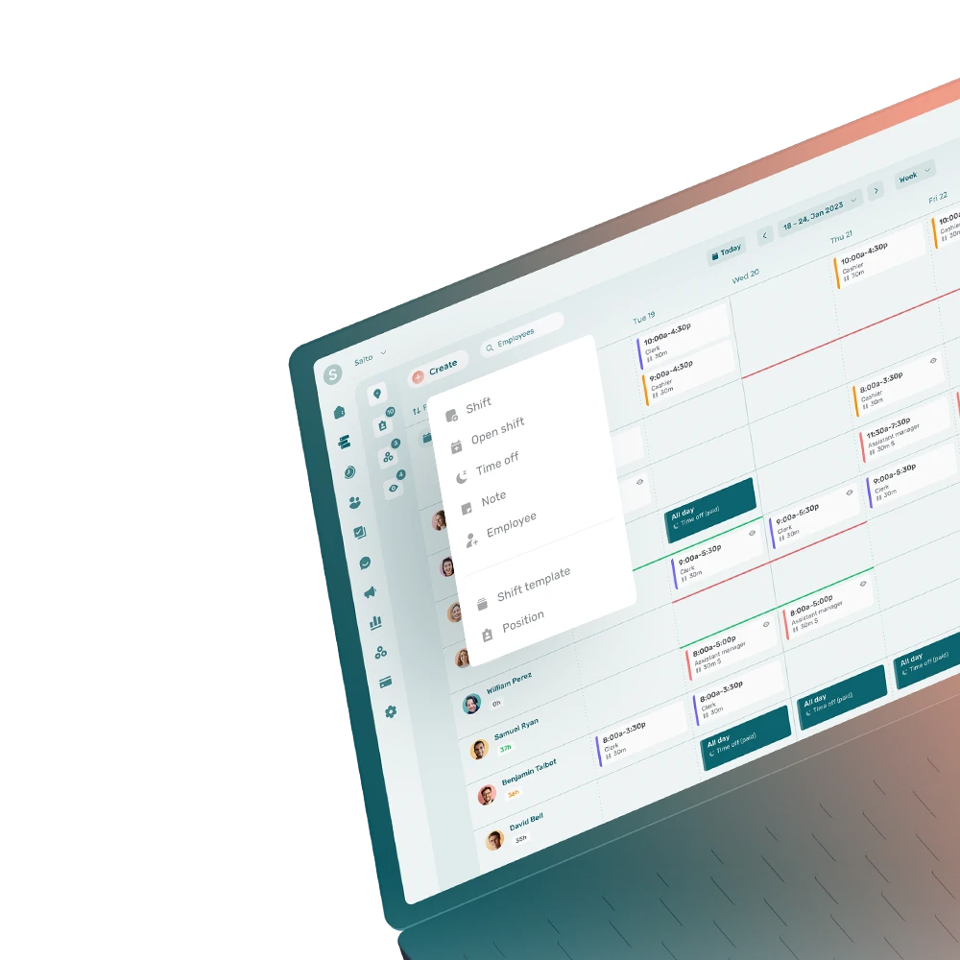A work schedule refers to the distribution of an employee’s working hours over a given period.
How to Prepare a Work Schedule?
A work schedule corresponds to the times at which employees start and end their work day. Supervisors are typically responsible for creating and sharing the schedule with their employees.
The steps involved in preparing a work schedule include:
- Analyzing your workforce needs
- Creating a reference schedule for the current period
- Assigning time slots to employees based on their availability, skills and preferences
- Checking that there are no scheduling conflicts
- Sharing the schedule with employees
What Are the Different Types of Work Schedules?
The different types of work schedules generally include:
- Fixed work schedules: employees always start and end their work day at the same time. For example, employees work from 9 a.m. to 5 p.m., Monday to Friday.
- Compressed schedules: employees complete their hours more quickly by working longer days. For example, employees work Monday to Thursday from 7 a.m. to 5.30 p.m. to reach 40 hours a week.
- Split shifts: employees’ work hours are divided into several shorter periods. For example, employees work from 7-11 a.m. and from 5-10 p.m.
- Flexible schedules: employees’ work hours vary according to the needs of the business. For example, an employee might work 40 hours a week during the holiday season and 20 hours a week the rest of the year.
- Free schedules: employees choose their own working hours. They can therefore work when it best suits them, regardless of the number of hours, as long as their tasks are completed.
- Rotating shift schedules: employees work alternating shifts. For example, one employee works every other weekend.
When Does a Work Schedule Have to Be Posted?
A good practice is to share work schedules at least one week ahead. In some industries however, schedules can be shorter notice as they may change according to factors such as customer reservations.
In Quebec, employers must share the work schedule with their employees at least 5 days in advance. An employer may change an employee’s work schedule, but must give 96 hours’ notice; if not, the employee may refuse the change.
The employer must also pay a salary equal to the employee’s normal rate for 3 hours’ work if he/she cancels a day’s work with less than 48 hours’ notice.
How to Create a Healthy Work Schedule?
To create a healthy work schedule for employees, managers must put the well-being of their team members first. Healthy work schedules give employees greater flexibility at work.
To create a healthy schedule, managers must consider employees’ availability and preferences, and make sure they get enough rest. They should encourage employees to take vacation so that they can get adequate rest during the year.
They must also share the work schedule with their employees within a reasonable timeframe that allows them to plan out their personal lives. They must also provide enough staff to avoid overworking their team members. and they must limit overtime.
Are There Work Schedule Templates to Help With Planning?
Absolutely! There are many free employee work schedule templates available online, often provided in multiple formats (Excel, Word, and printable PDFs). Some of the most common ones include:




